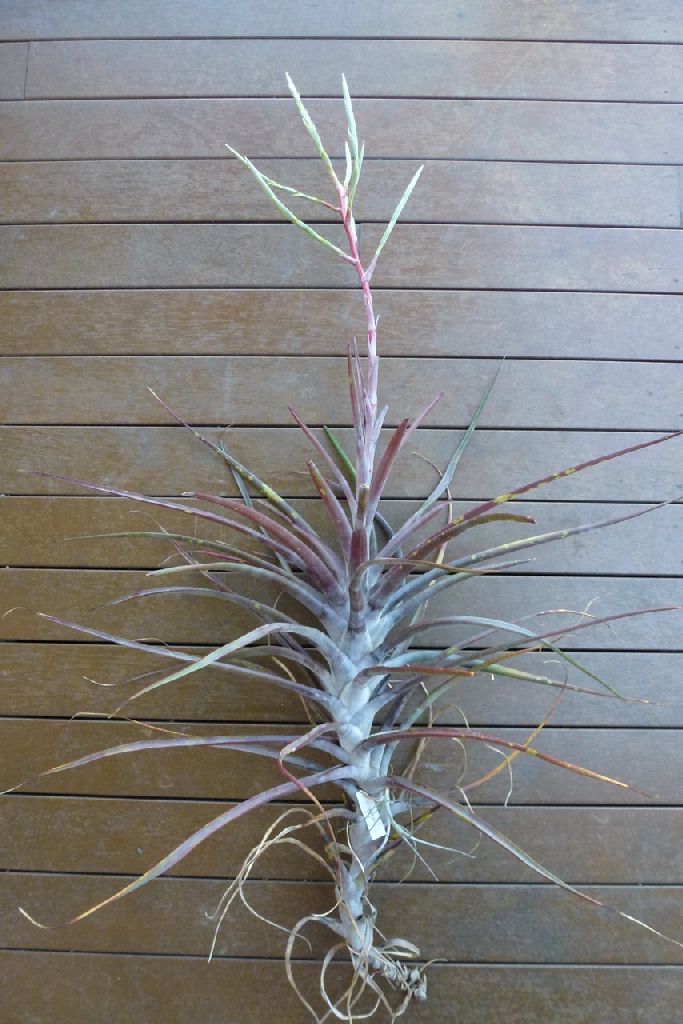
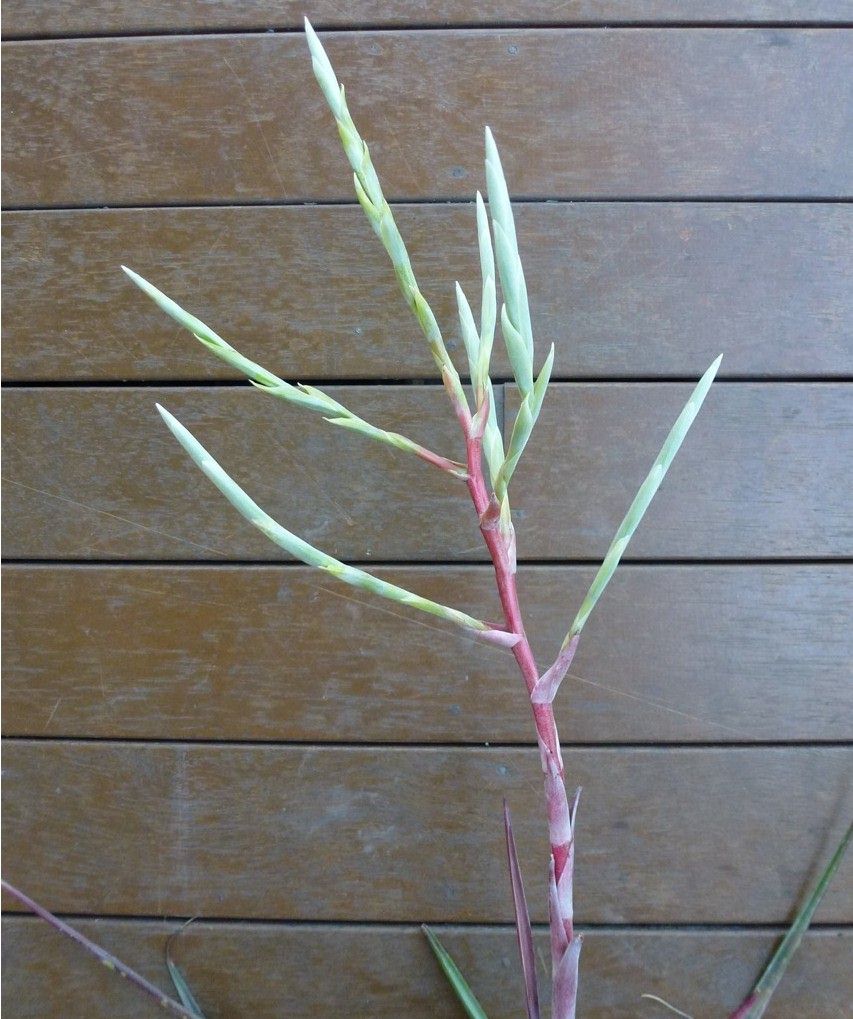
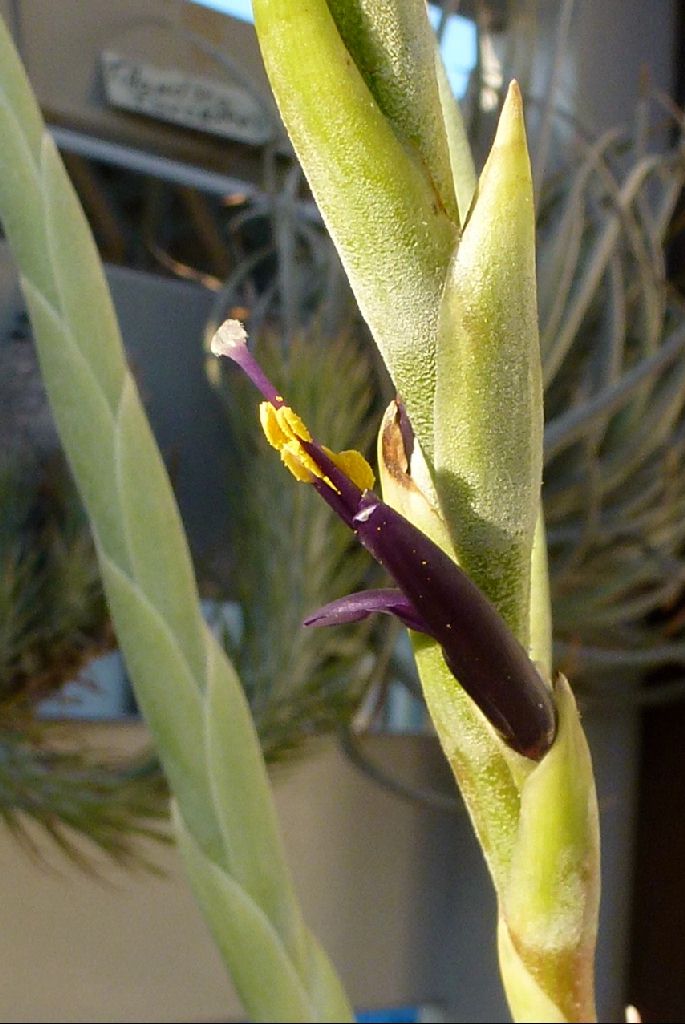
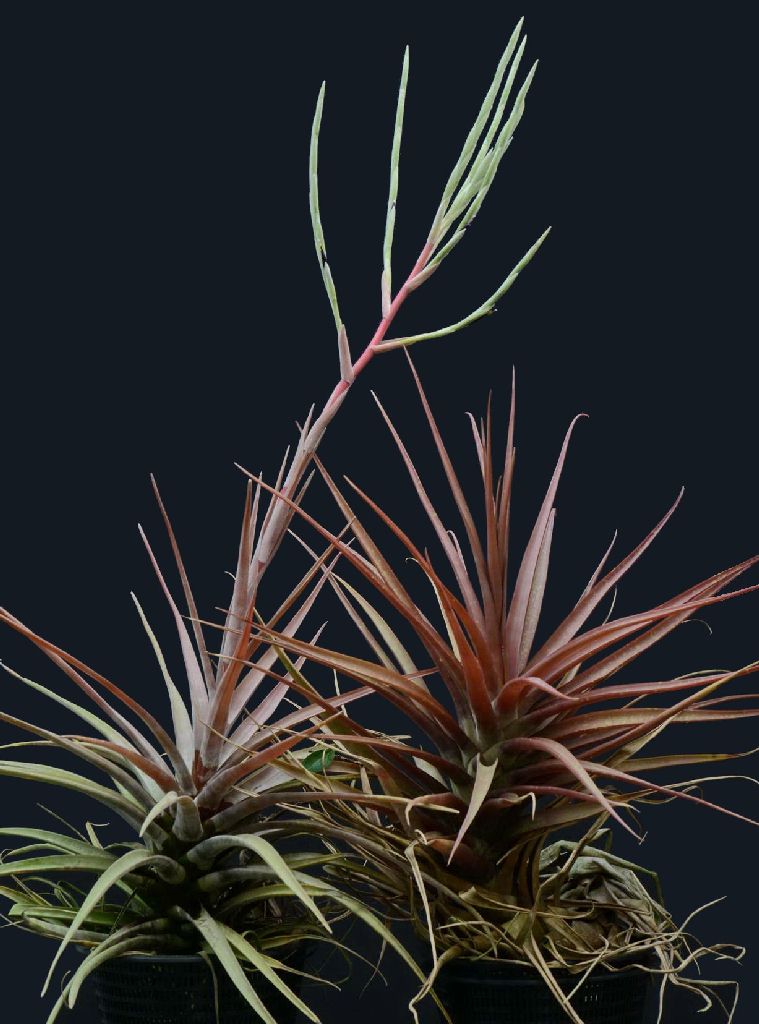
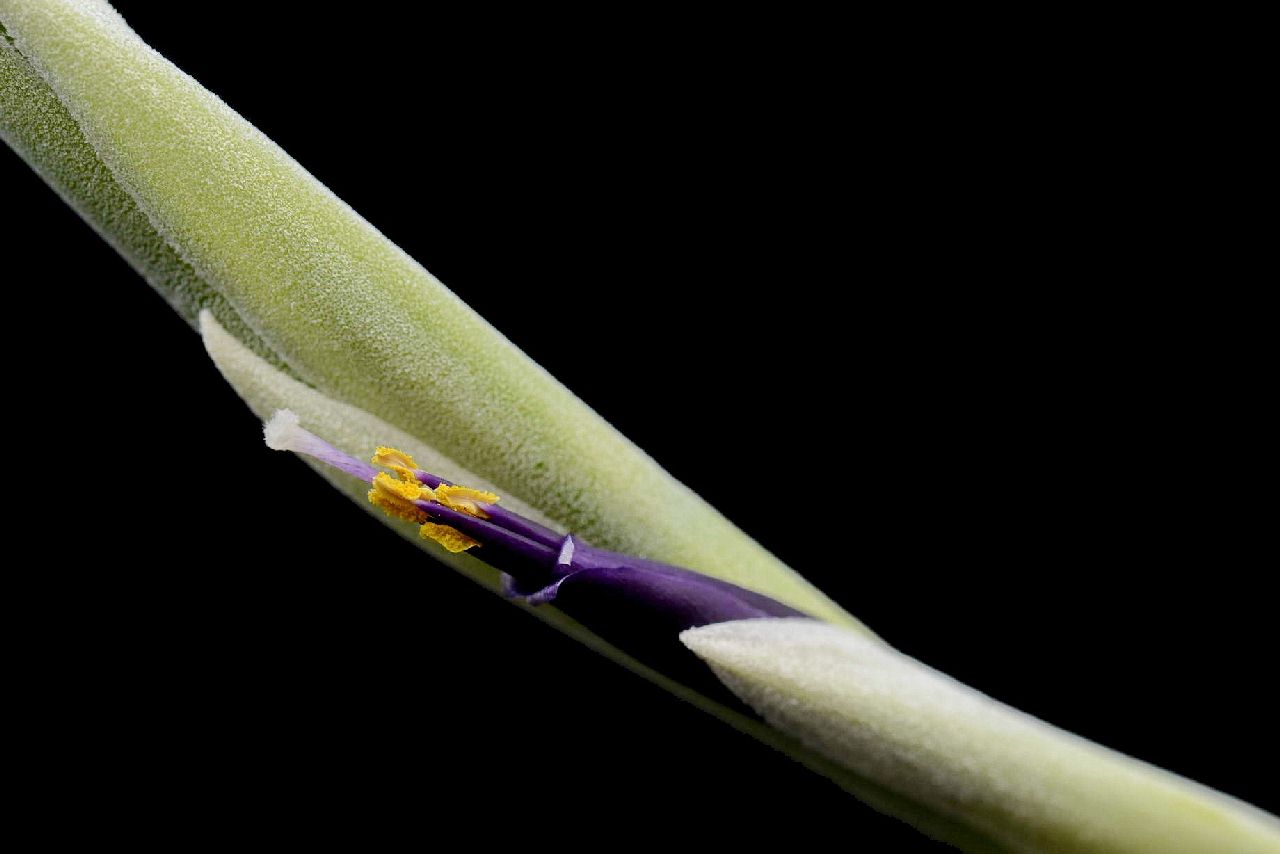
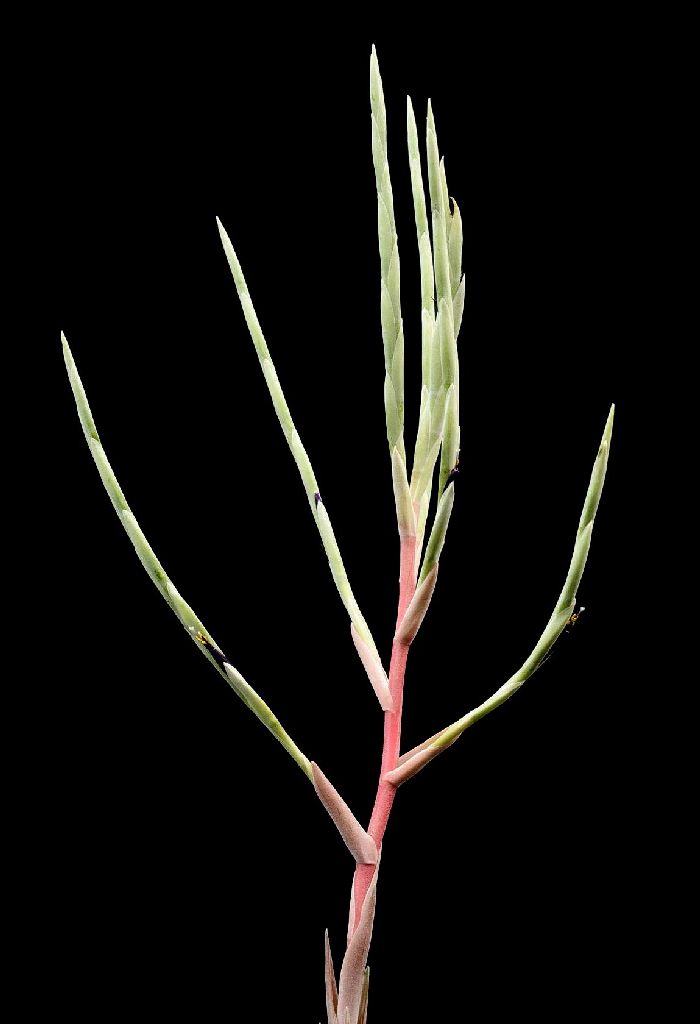
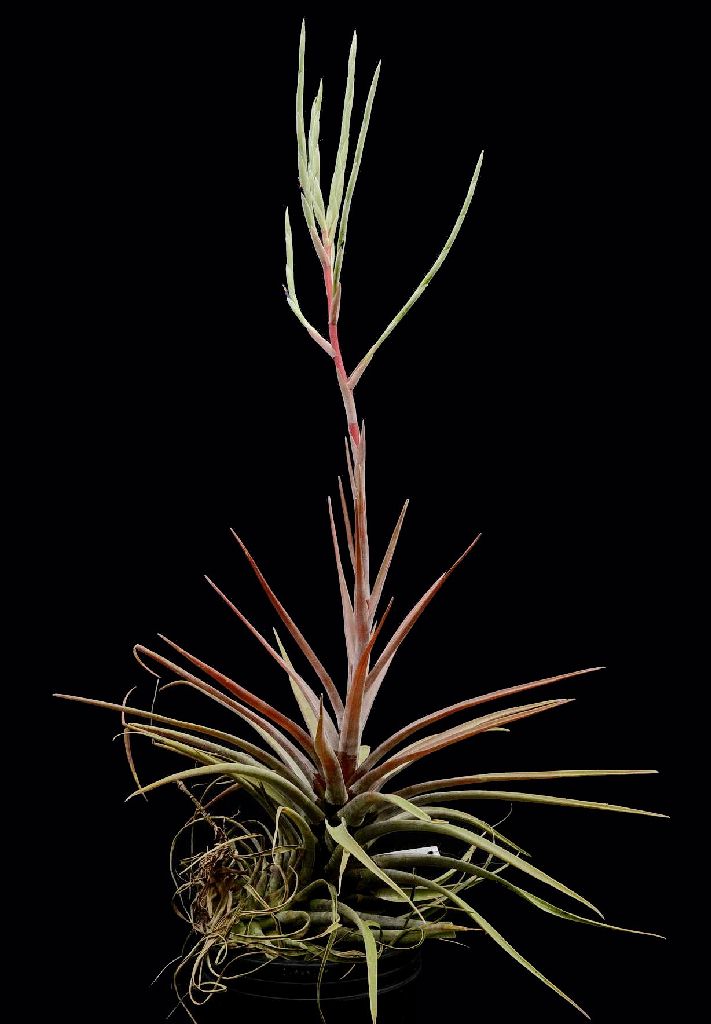
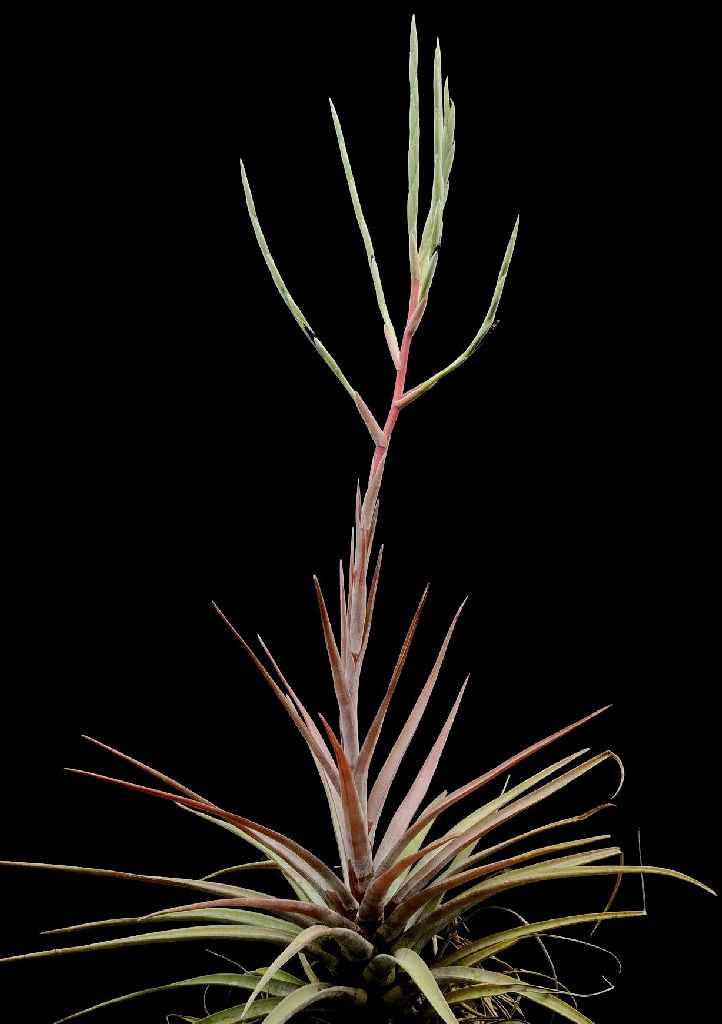
Peter Tristram ...."I have 2 basic forms - one from Germany like Bruce's and one from Tropiflora with more glabrous leaves and a more coppery colour see comparison shot above. There was some suggestion it is a natural hybrid too, like the rest of the them!"
Peter Tristram ...."Bruce, I reckon you have a plant ex Len Colgan, as I also have one from him which is very long stemmed like yours. The one in bloom here came from Lydia and is very similar to Len's but not as caulescent. The one from Tropiflora is different again, larger, with stacking, more coppery-red leaves and less frosting. There were a couple in bloom at Tropiflora when I purchased mine, just typical novakii. The flowers are very dark with a tight curl on the tips."
Derek Butcher ... "I still can't understand how two forms got into the nursery trade when Renate could not find it in the wild!"
Peter Tristram ... "Maybe it depends on who you talk to. According to some of the Yanks, quite a few clones were collected by Mr Novak but, as was typical of many of the US collectors in the good old days, recording localities was not a priority. But, I must admit I was surprised to come across this plant at Tropiflora and added some to my collection. Maybe Dennis can remember more than I can of what I was told!
I wonder if Pam knows more of the Novak story?"
Len Colgan ... "In the 1980s, I returned a few times to Adelaide's sister city of Austin (doing research in mathematics with staff of the University of Texas), and went around to Tony Novak's place a couple of times. He seemed a "nice old guy", and was a leading figure in the local bromeliad group. He was very proud of T. novakii, but did not elaborate on his discovery of the plant. I remember getting a couple of plants then, probably amongst the first ever released, but I cannot recall from whom. Something tells me it was not Tony himself. Anyway, since then, I have spread them around Australia to unsuspecting collectors. I am delighted that this species has now flowered. I do know, from conversations with Renate, that she spent a lot of time in the general area from where Tony claims he found the plant, and she is adamant that there are none there (now). In fact, she wonders about the whole story behind this "species"."
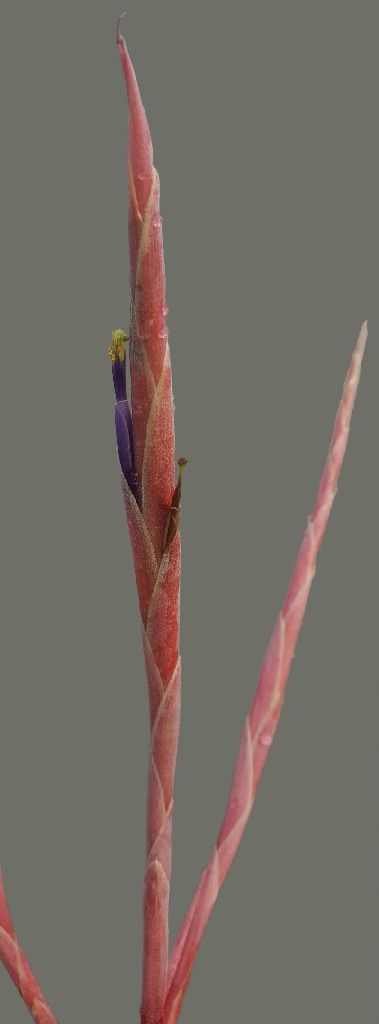
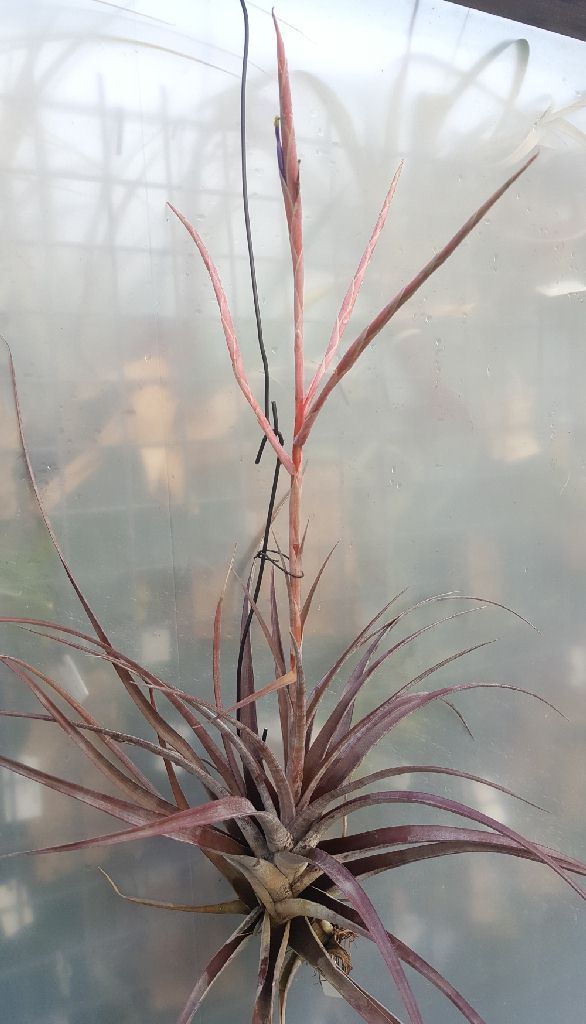
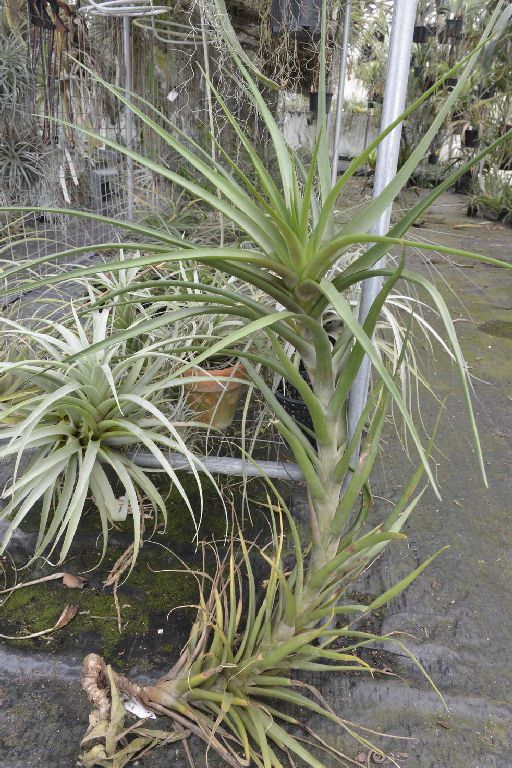
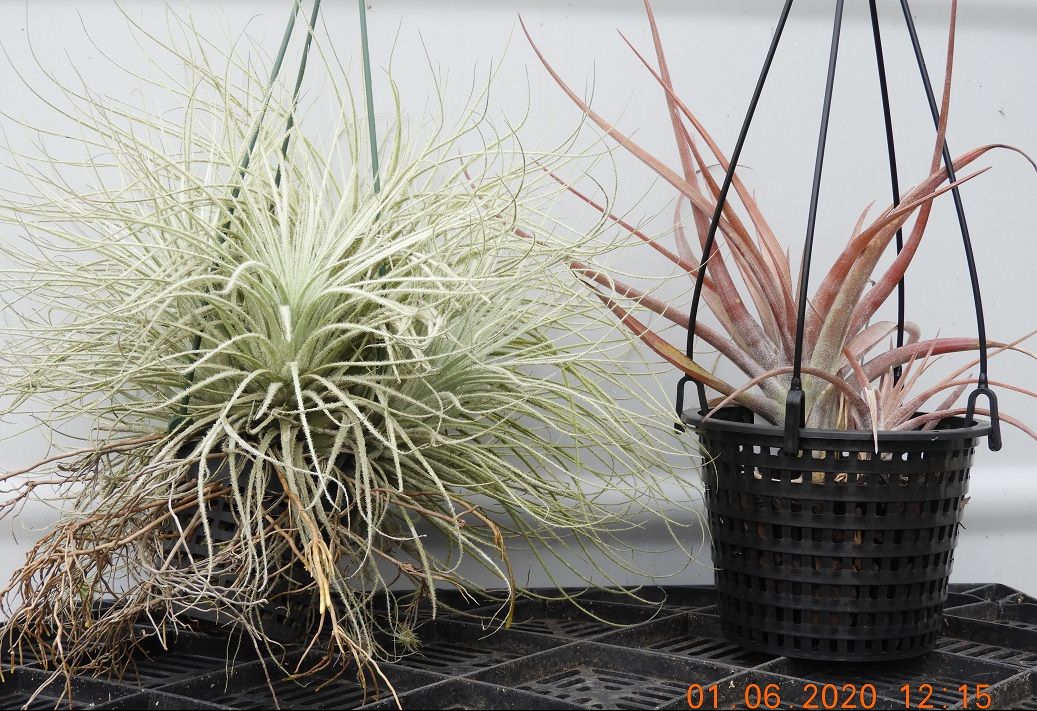
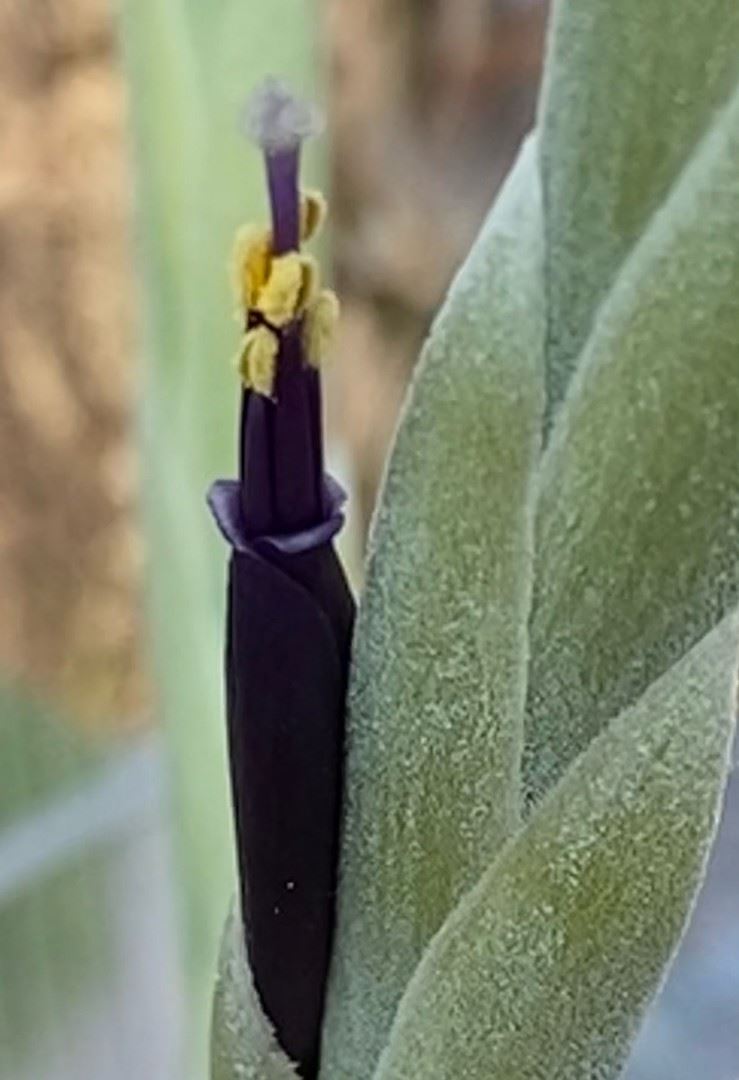
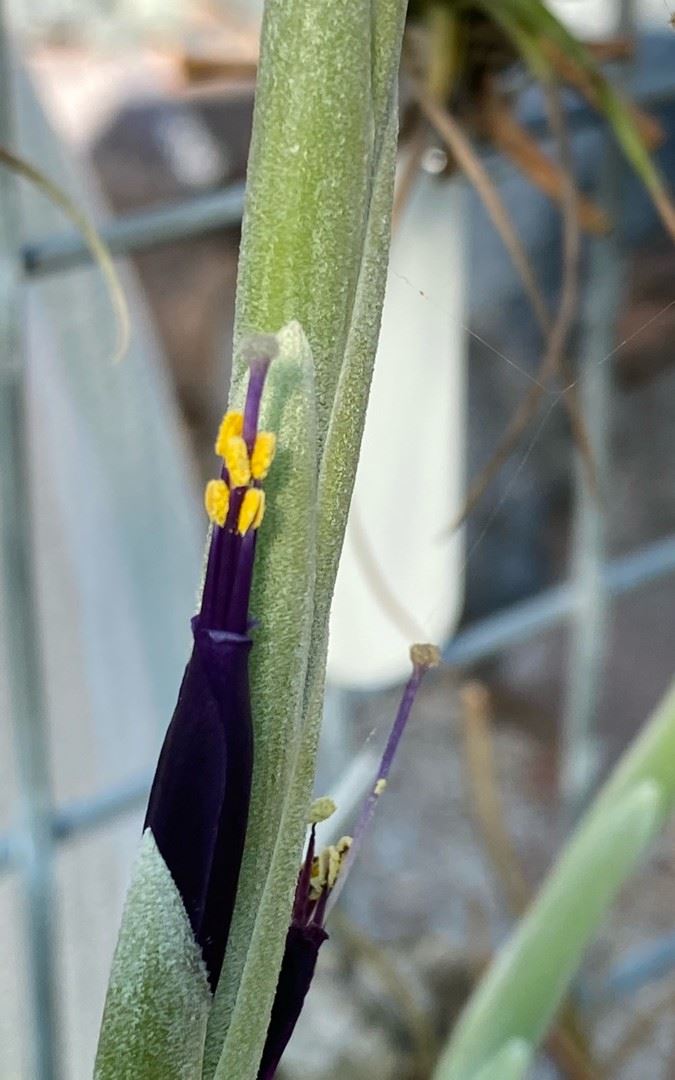
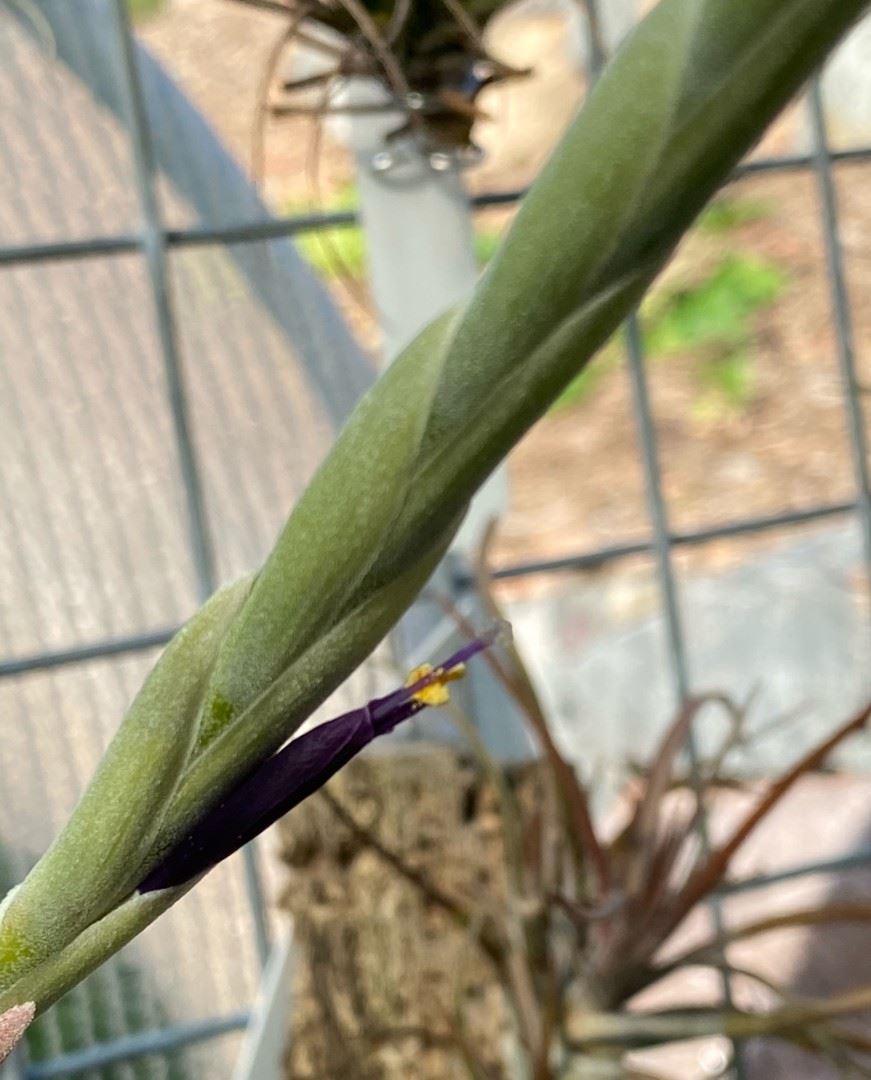
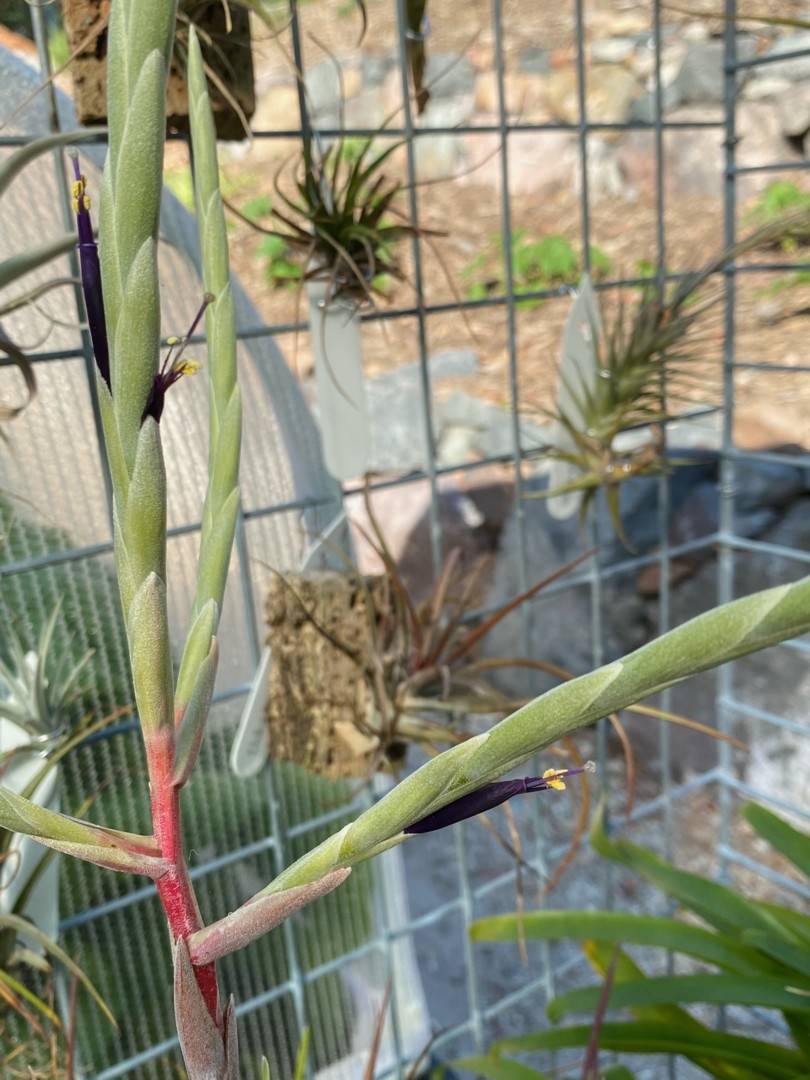
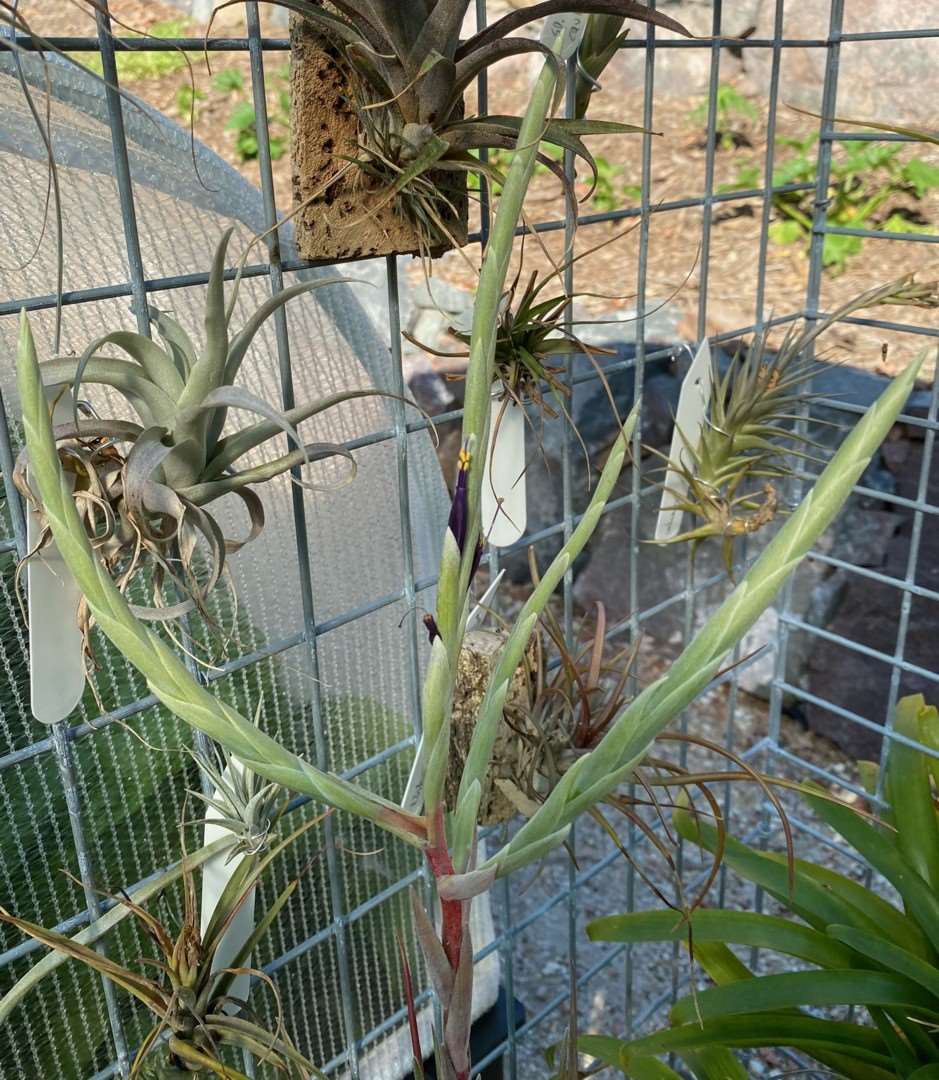
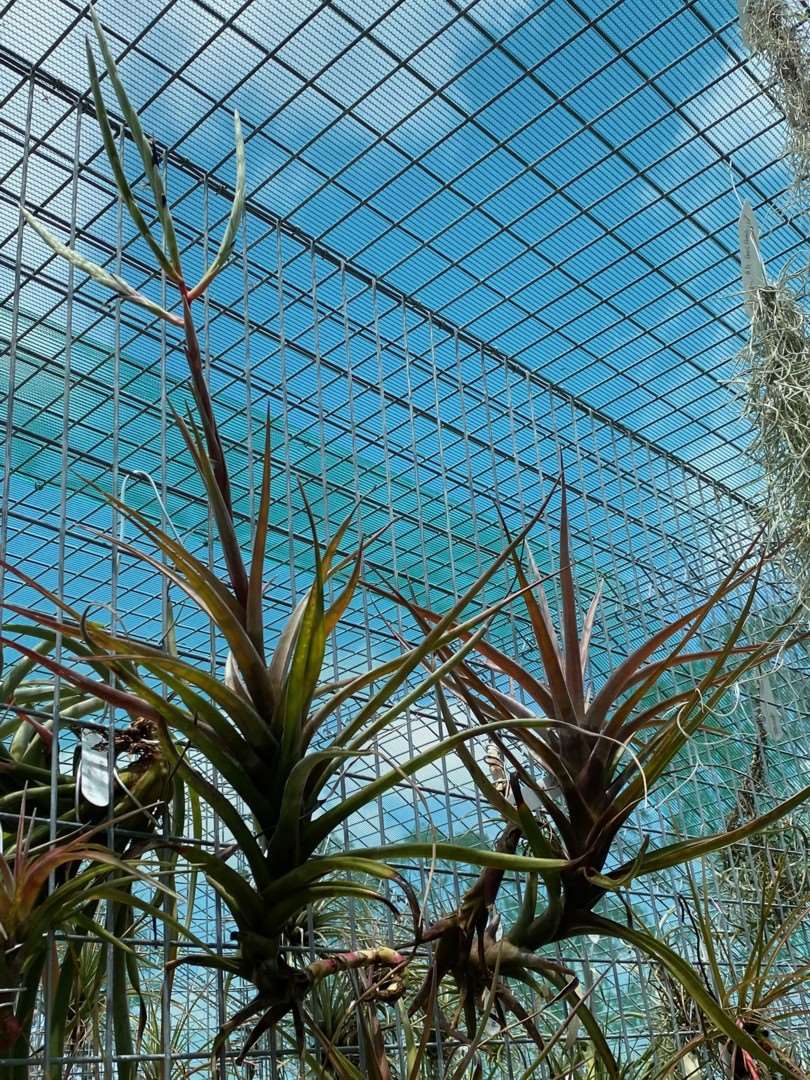
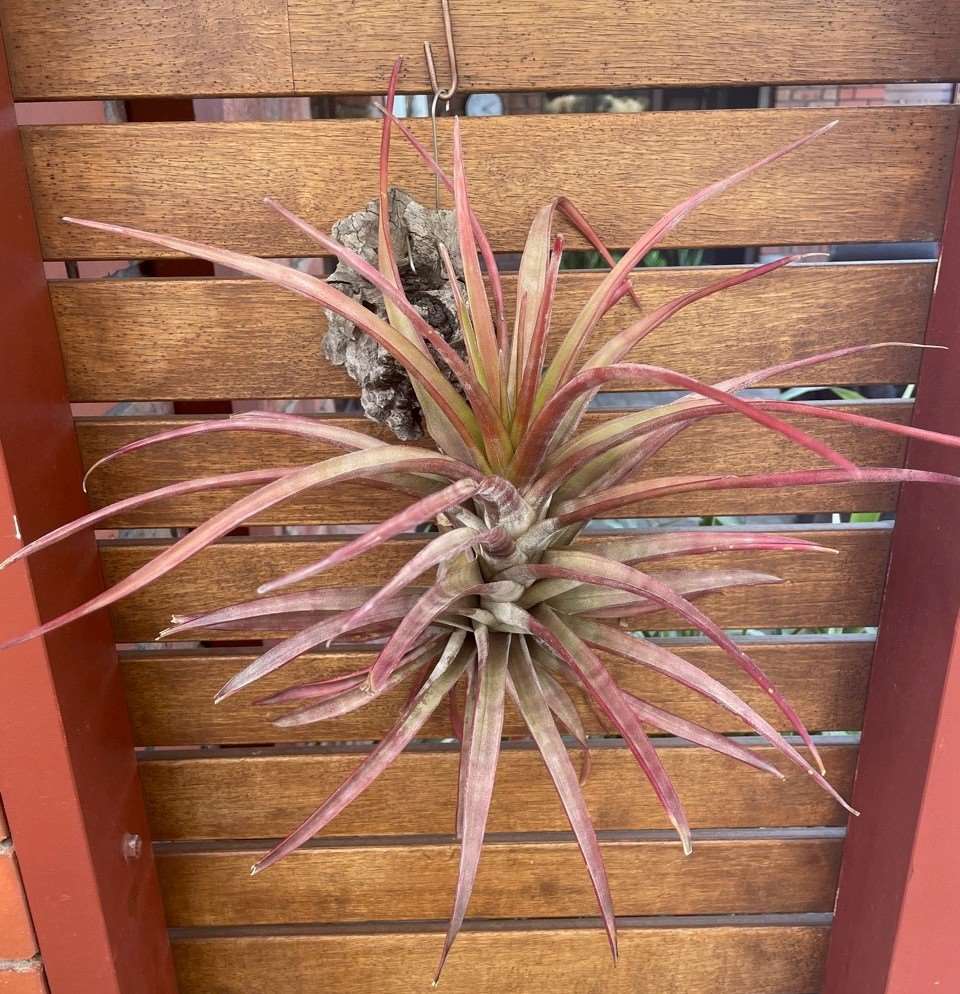
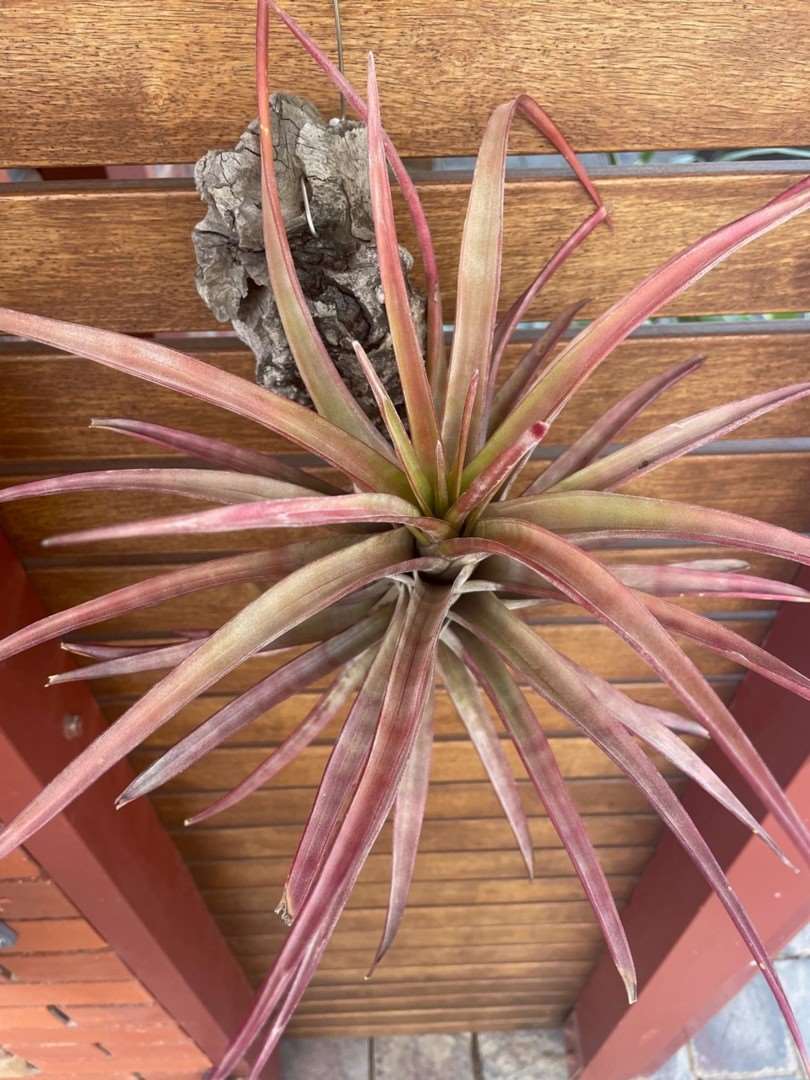
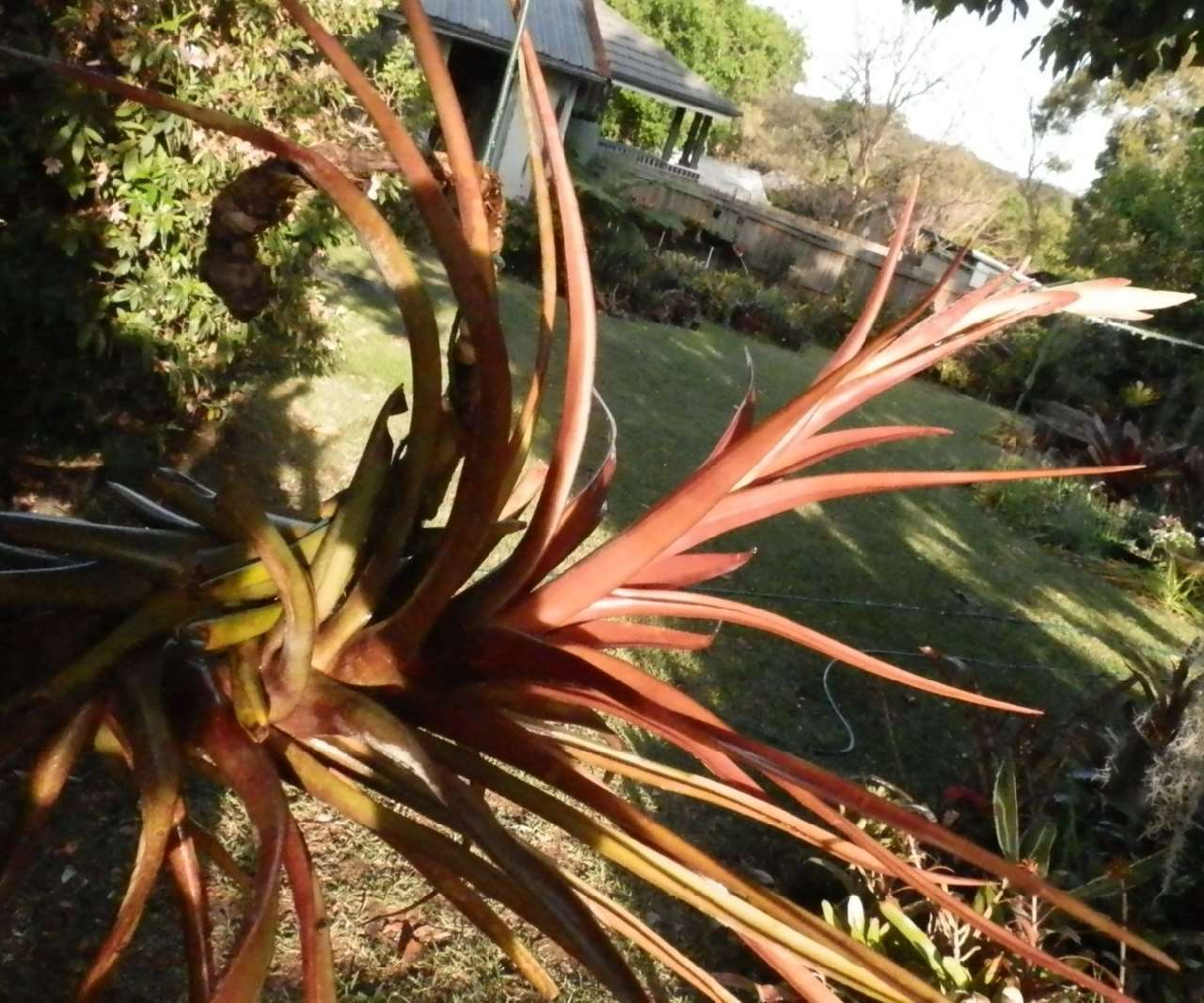
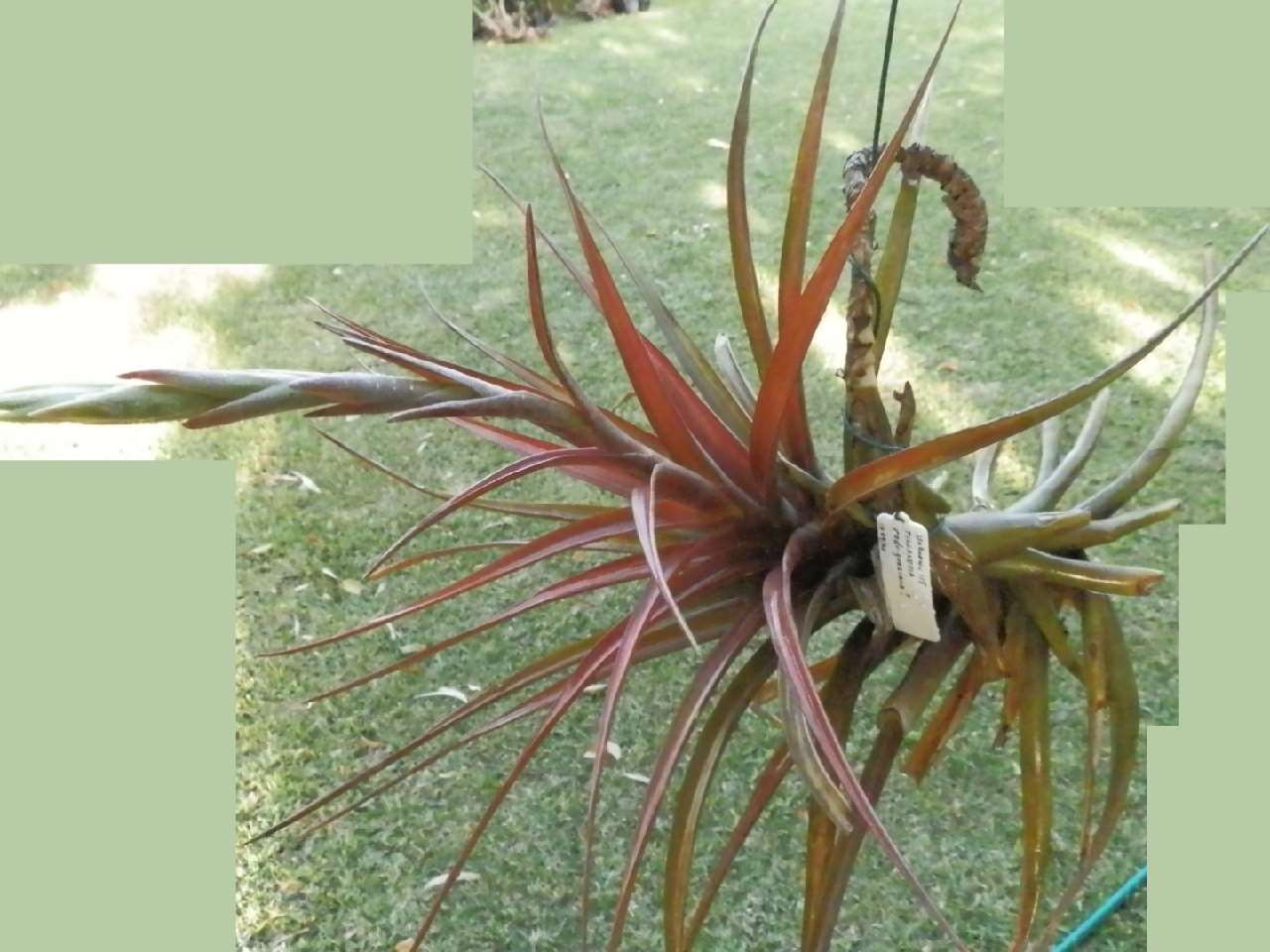
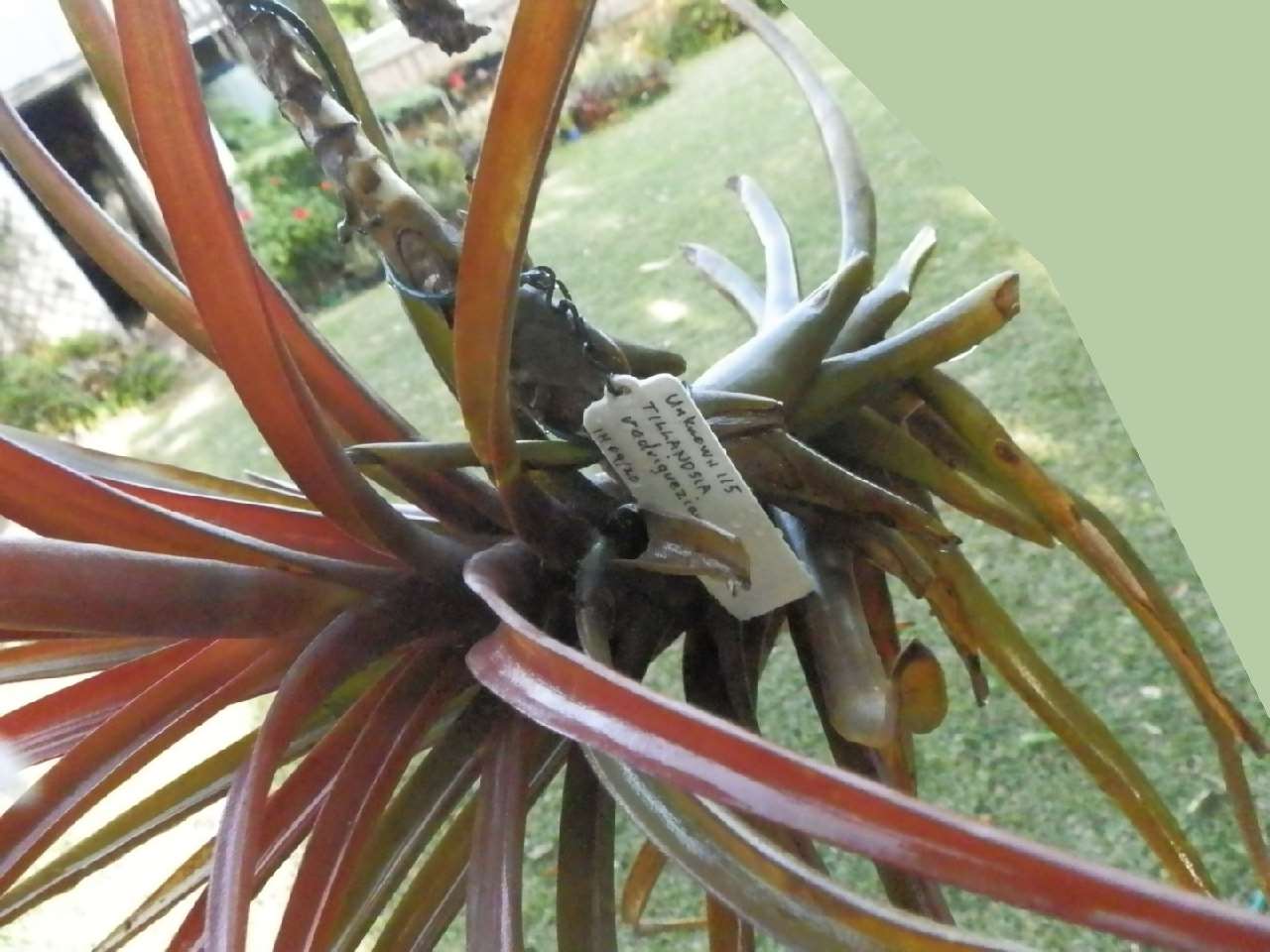
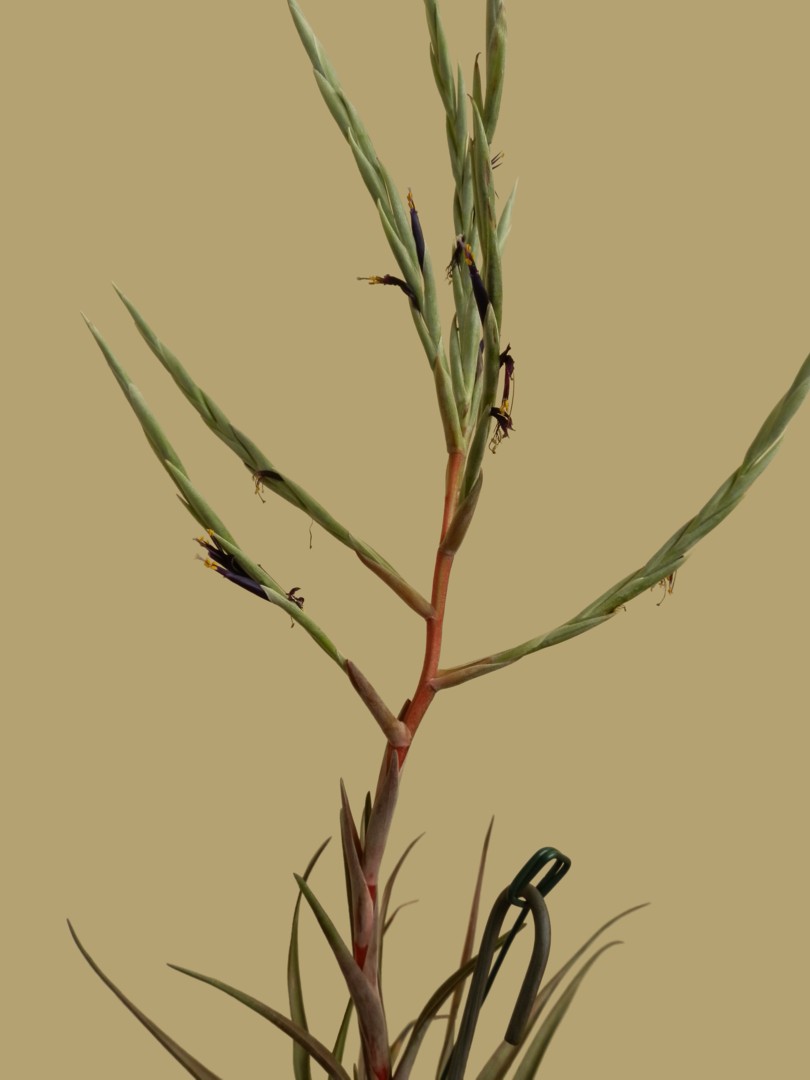
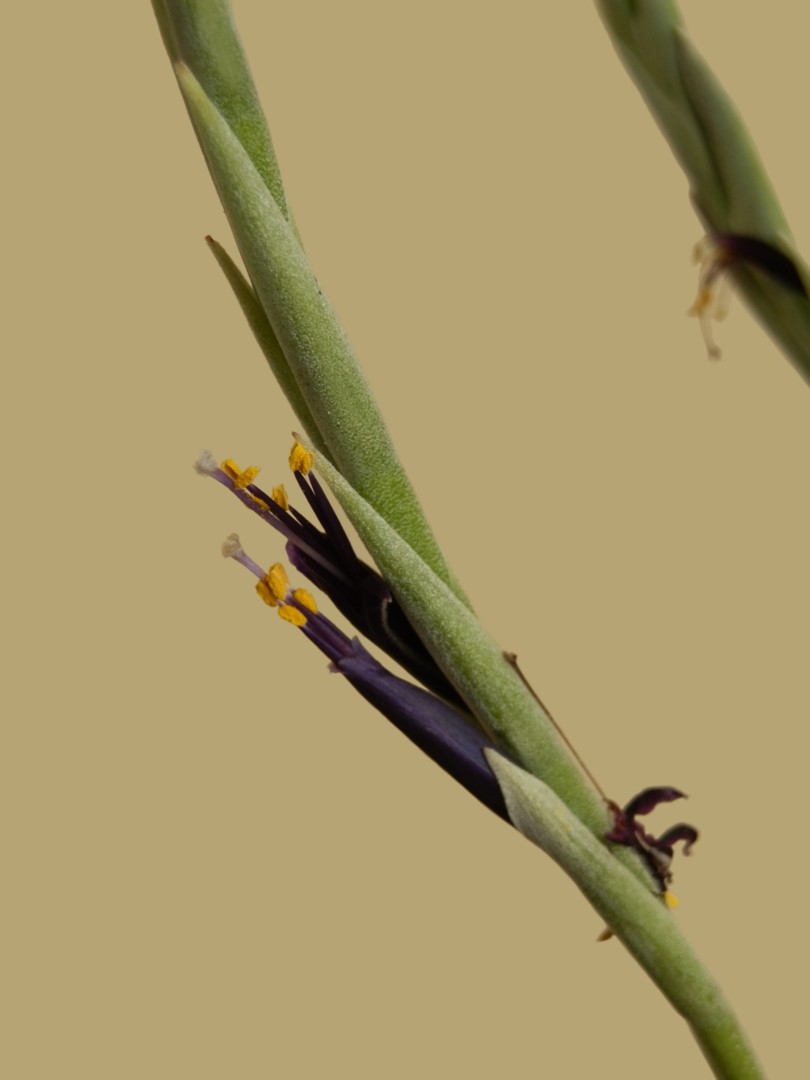
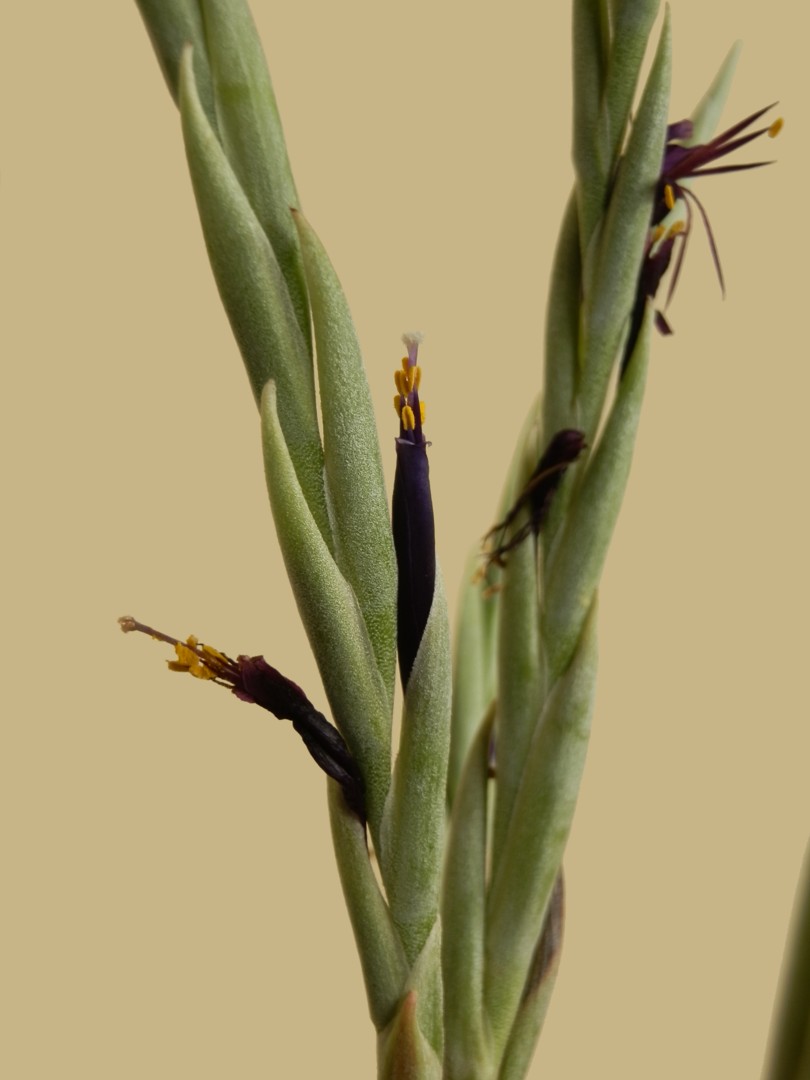
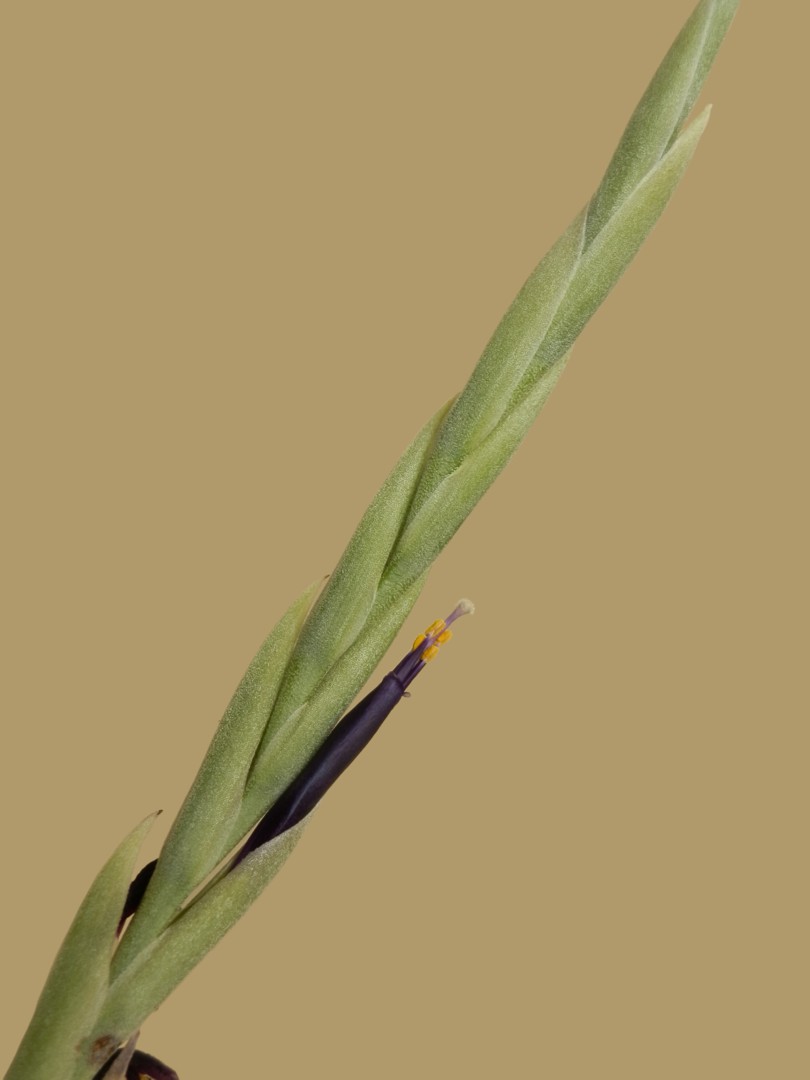
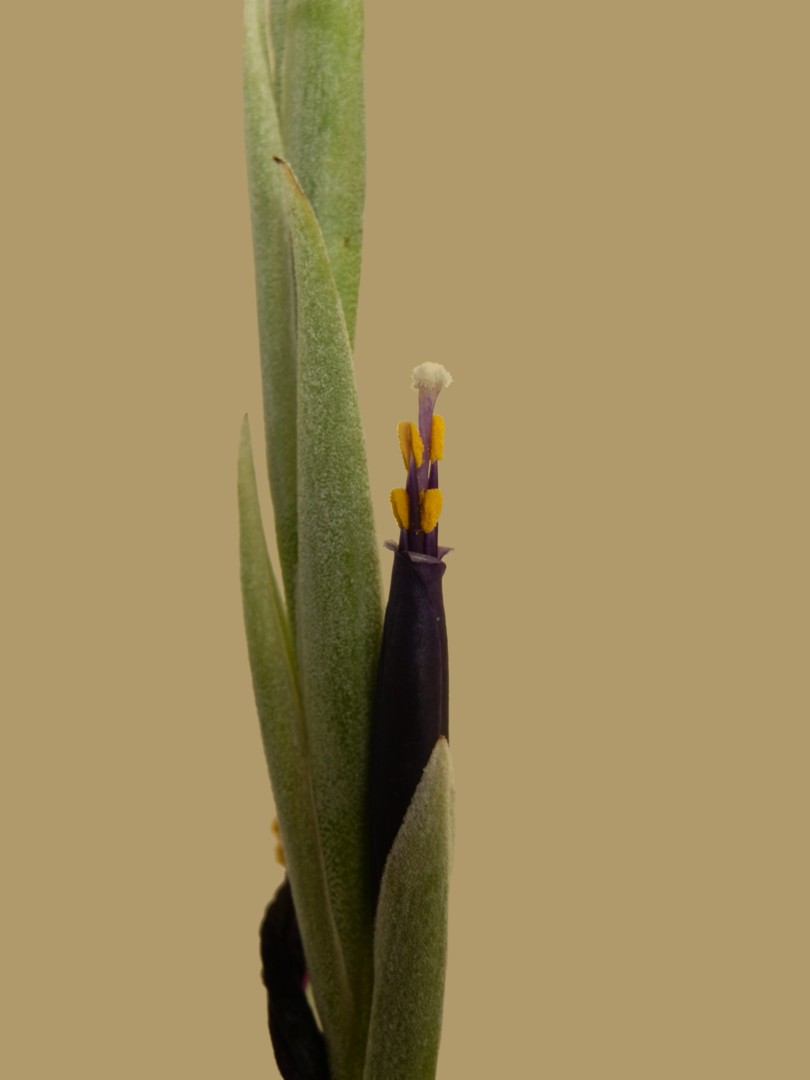
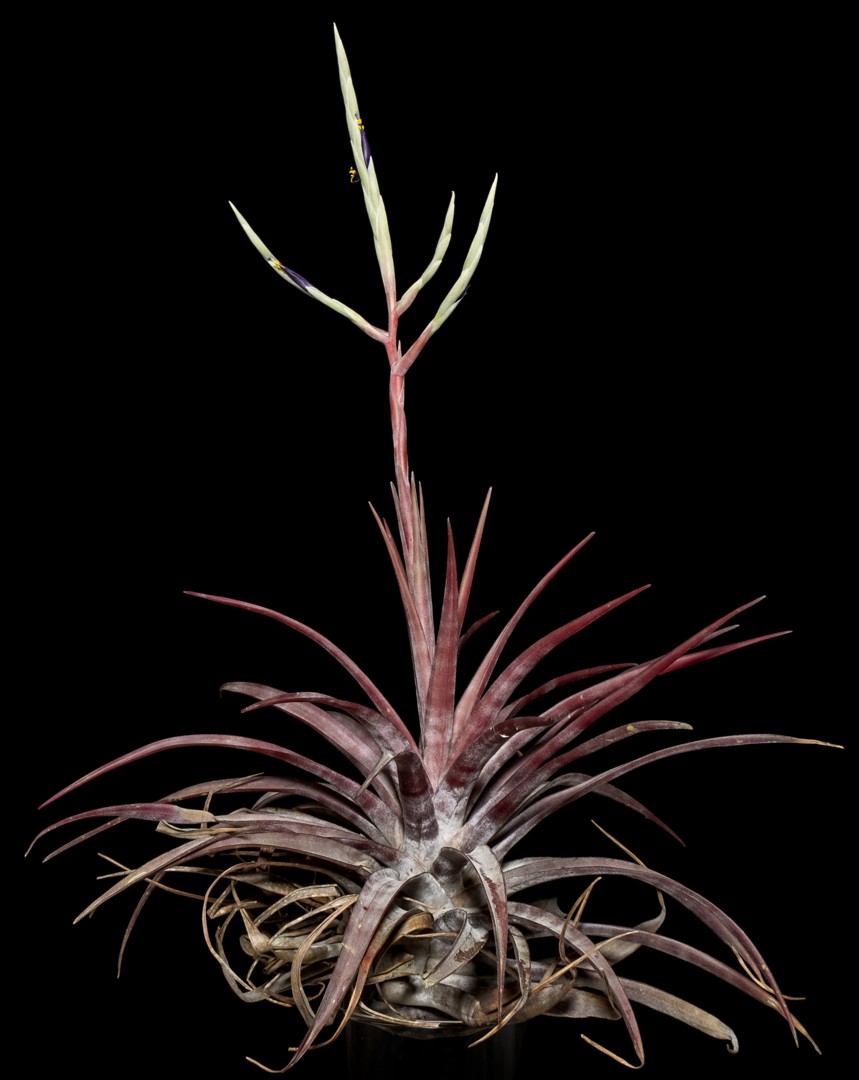
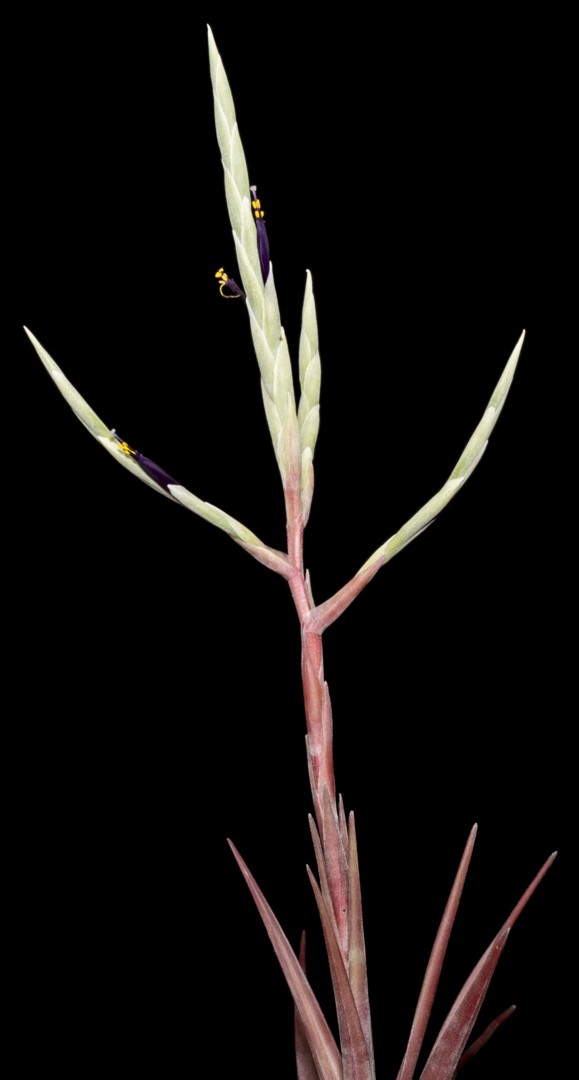
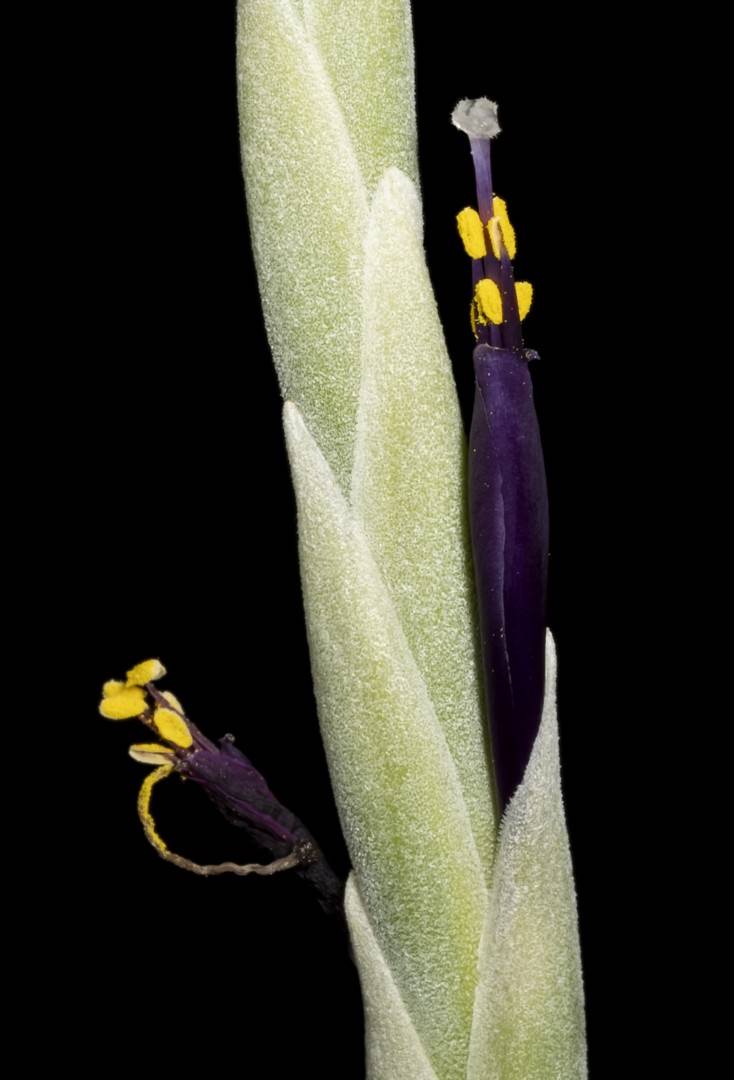
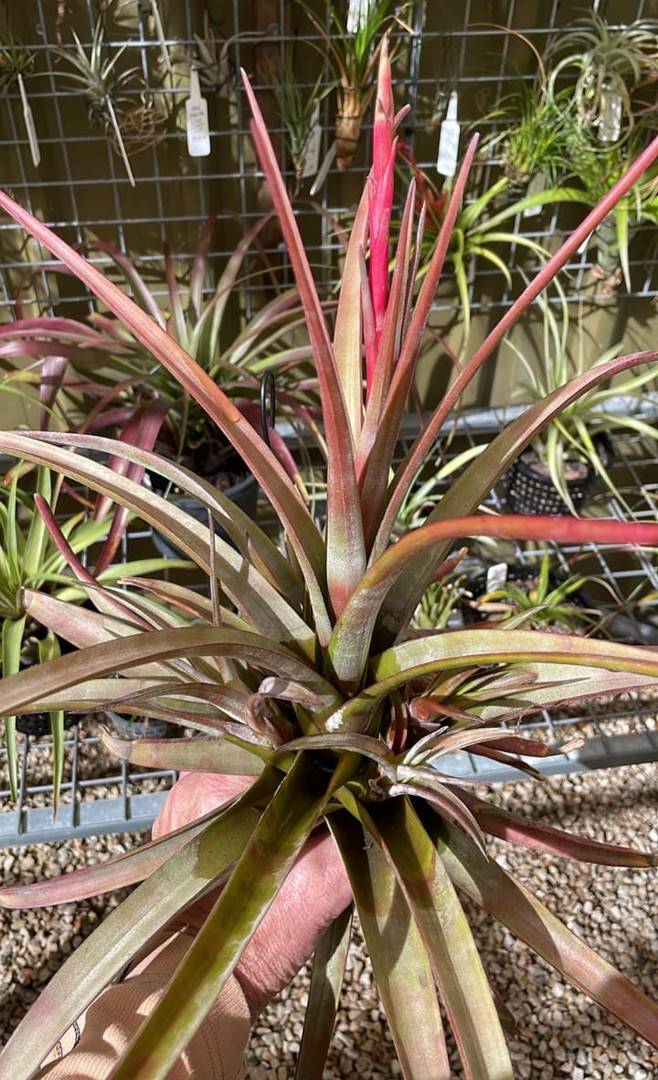
Plant long caulescent, flowering 0.5-1.0 m tall.
Leaves densely imbricate along the stem, some¨what succulent, stiffly spreading, 15-40 cm long, reddish-silver.
Leaf sheaths ovate, 3-5 x 3-4 cm, castaneous, densely pale brown punctate lep¨idote, the trichomes with an erect, crispate wing.
Leaf blades narrowly triangular, acute to atten¨uate, 12-20 mm wide, densely cinereous lepi¨dote, obscurely banded abaxially.
Scape erect, ca. 20 cm x 5 mm, pale lepidote, red or rose.
Scape bracts erect, laxly imbricate, exceeding but exposing the upper internodes, the lowest subfoliaceous, the upper elliptic, acute, reddish-silver to rose.
Inflorescence laxly bipinnate with 3-6 erect to spreading branches, to 30 x 20 cm. Primary bracts like the upper scape bracts, 3-6 cm long, red to rose.
Branches with a 2-4 cm, naked or 1-bracteate sterile base exceeding the primary bracts, each branch 15-18 cm x 6-10 mm, dis¨tichously 6-13-flowered, thick but not terete.
Floral bracts laxly imbricate, elliptic, acute, 25-32 mm long, thin, nerved, ecarinate, green, densely white lepidote.
Flowers sessile, erect, anthesis diurnal.
Sepals elliptic, acute, 16-18 mm long, the adaxial pair carinate and 1/2 connate, thin, nerved, densely pale lepidote, green.
Petals oblanceolate, acute, 36-40 mm long, dark blue-violet.
Stamens in two unequal series of three, exserted, dilated distally, blue-violet like the petals.
Style blue. Stigma white.
PARATYPES. Without locality but undoubtedly Mexico, flowered in cultivation 16 May 1989, L. Del Favero s.n. (SEL); without locality, flowered in cultivation Nov. 1990, R. Ehlers s.n. (SEL).
This unusual species superficially resembles:
Tillandsia albida because of its elongate stem, but can easily be distinguished due to its compound inflorescence with densely lepidote bracts and sepals, and violet {not white} petals.
From T. socialis it can be recognized by its long caulescent habit {not stemless and densely clustering}, carinate, more highly connate adaxial sepals {connate 8-9 mm vs. 3-4 mm} and longer petals {36-40 mm vs. 30 mm}.
Tillandsia novakii fits Gardner's group I (Gardner, 1986) but has characteristics of both her subgroups I and II. It is sparingly cultivated in the USA and Germany. The name honors A J Novak of Austin, Texas, who first provided a specimen with collection data.
From: "Renate Ehlers"
To: "Derek Butcher"
Date: 02 Jun 2010 15:48 GMT
Derek,
As you know I think T. novakii is not a good spec. In any case it is not growing at the location Harry gave in the description. And in Corpus Christi people had nearly in every collection the plant Harry called later T. novakii. When I was in Corpus Christi they told me, that the plant is of unknown origin, but grows well, and I took a plant home which flowered some years later. When I saw it in Sarasota, I told Harry, that I agree the plant is something new or an unknown hybrid, Harry did not know the type-location then. Only some months later he described the plant with the location Novak gave. But in the whole area are no such plants, we were exploring it for 2 days.
Sincerely
Renate